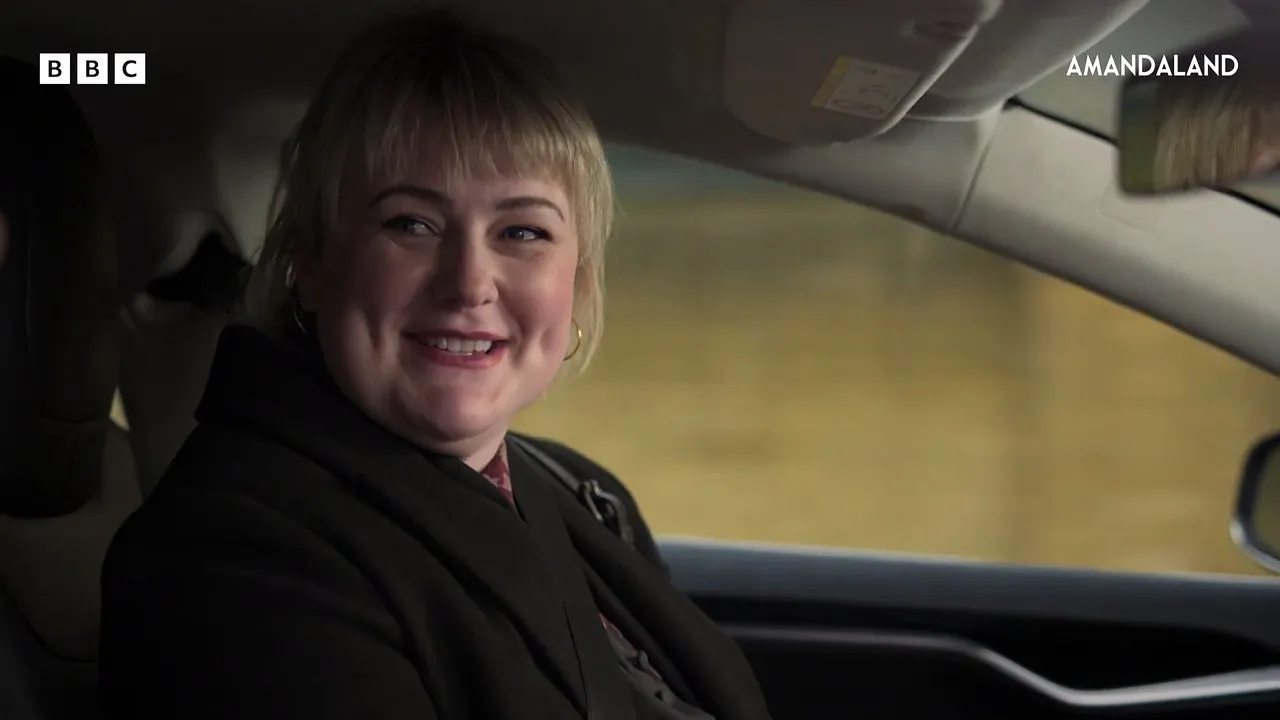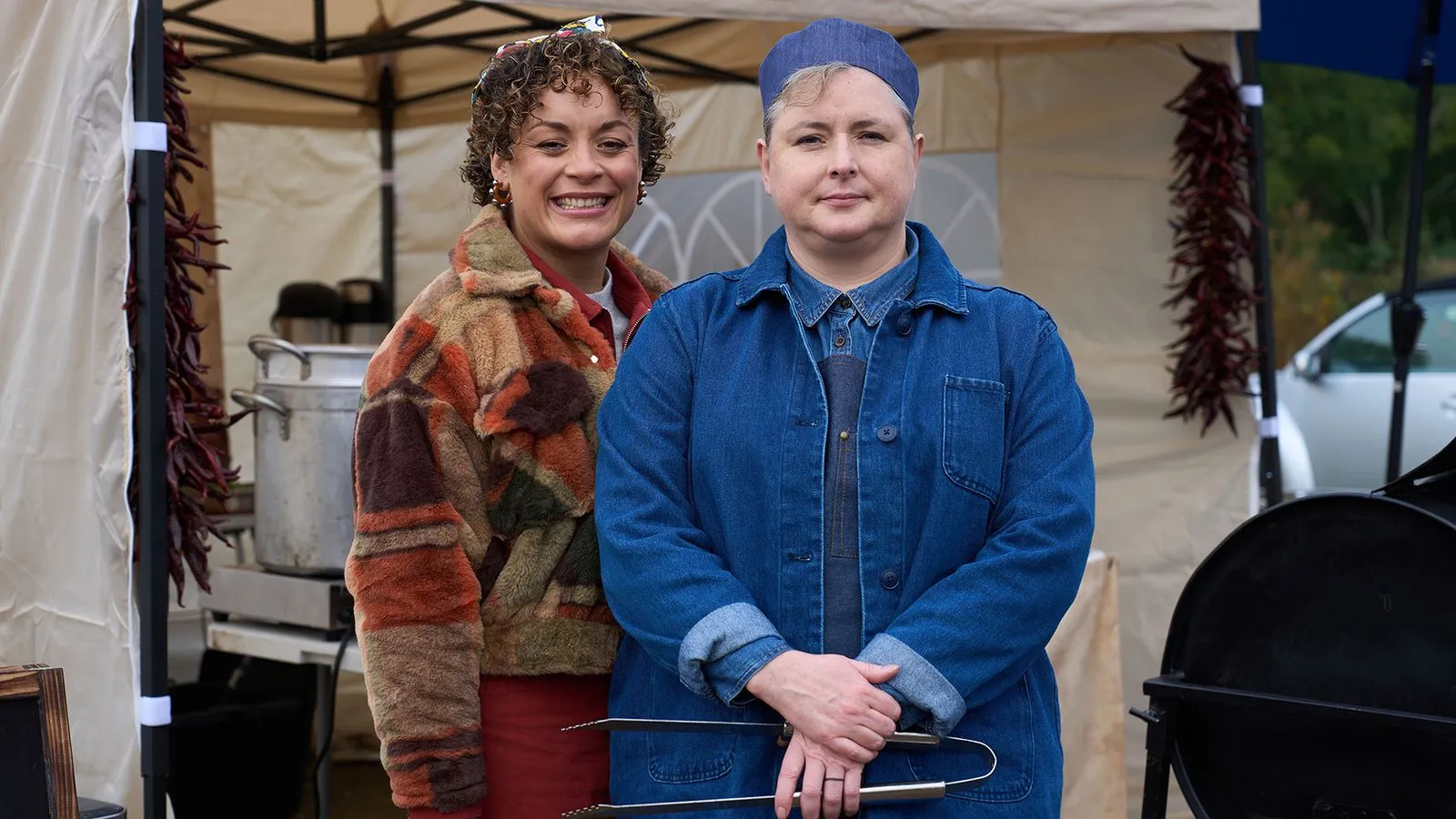Amandaland Season 1 unfolds as an unexpected offshoot of its predecessor, drawing on a cherished narrative while charting a fresh course for its central figure. Amanda, once immersed in an existence defined by refined expectations and the comforts of affluence, now confronts a drastically altered reality after a significant personal upheaval.
Crafted by a creative team known for incisive portrayals of contemporary domestic life, the series appears on BBC One and is available on BBC iPlayer and Stan, presenting a reimagined world where the familiar is irrevocably shifted.
The shift from Amanda’s former life in an upscale district to her current residence in South Harlesden—affectionately dubbed “SoHa”—captures the essence of social and economic transformation in modern Britain. This relocation serves as a visual and thematic counterpoint to her past, with the new setting articulating the tension between established privilege and a raw, unvarnished existence.
As the narrative unfolds, the backdrop of SoHa sharpens the focus on themes of social class, reinvention, and identity, compelling the viewer to consider how altered circumstances reshape both self-perception and societal roles.
Charting New Territory: Plot and Setting
Amanda’s path after separation and divorce is presented with a clinical precision that underscores the transformation wrought by personal upheaval. The narrative unfolds with a meticulous focus on her attempt to redefine existence amid a stripped-down reality, where the loss of former affluence forces an unvarnished confrontation with daily life.
Her struggle to adjust to a smaller living situation is compounded by the shift of her children from private institutions to state schooling, an alteration that reshapes family dynamics in unexpected ways.
The series deploys an episodic structure, turning routine events—school runs, PTA gatherings, and casual neighborhood exchanges—into subtle instruments that chart the evolution of a life reconfigured by circumstance.
Each episode serves as a vignette, revealing the delicate balance between resilience and vulnerability in a setting that demands reinvention at every turn.
South Harlesden, colloquially known as “SoHa,” emerges as a setting imbued with its own distinctive character. This locale, rendered with an unflinching realism and a touch of sardonic humor, stands in stark opposition to Amanda’s previous, more polished environment.
Car boot sales transform into impromptu meeting grounds for a mosaic of characters, while hot tub gatherings and school corridors burst with moments that oscillate between levity and gravity. The environment operates as a dynamic canvas, its gritty details and unexpected charm reflecting the tension between inherited privilege and emerging realities.
Each setting captures a snapshot of modern urban life, challenging established archetypes and prompting reflection on how shifts in circumstance shape personal identity and social roles.
A Portrait of Change: The Character Mosaic
Amanda emerges as a force transformed by life’s sudden disruptions. Once epitomizing a world of polished sophistication and unshaken confidence, her journey unfolds amid unforeseen challenges that have reconfigured her existence.
The narrative captures her evolution with sharp clarity, revealing a woman who contends with the loss of her former grandeur while discovering her own delicate resilience. Her character exudes a striking combination of vanity and determination, punctuated by moments of physical humor and witty repartee that inject levity into a tale marked by profound upheaval.
This portrayal invites meticulous examination of how personal cataclysm reshapes identity and compels a reevaluation of what it means to remain steadfast in the face of radical change.
Anne, a longstanding confidante, emerges as a figure whose support transcends conventional friendship. Her steady presence and evolving influence signal a shift from a peripheral role to one of substantive impact, subtly steering events with quiet insistence. Felicity’s exchanges with Amanda reveal a charged dynamic that marries acerbic banter with unexpected tenderness.
Their dialogues transform routine encounters into vivid displays of familial tension and sporadic warmth, exposing the intricate contours of relationships scarred by time and altered circumstance. The introduction of figures such as Della—with austere candor that cuts through pretense—Fi, whose quirky demeanor sparks unforeseen humor, and Mal, who offers a measured counterpoint, injects fresh vitality into the unfolding narrative.
The ensemble functions with palpable synergy, as varied voices interact in a manner that deepens the story’s texture. Parent-child exchanges offer comedic relief alongside a subtle dissection of generational expectations colliding with contemporary realities. Interactions among the extended cast cultivate an atmosphere where every dialogue crackles with latent significance.
Conversations set against everyday backdrops reveal the convergence of diverse social narratives, with each character contributing to an intricate mosaic that reflects the tensions and harmonies inherent in modern domestic existence.
Satire and Wit Amid Domestic Change
The series casts a sharp gaze on contemporary domestic life by exposing the paradoxes of modern middle-class motherhood. Its narrative turns the everyday rituals of parenting into a forum for wry social critique. Amanda’s forced reinvention in an unfamiliar setting shifts the focus from a life of inherited elegance to the raw realities of economic adjustment and cultural dislocation.
Each awkward school run and bemusing PTA gathering becomes a carefully crafted vignette that transforms routine challenges into moments of incisive observation. These sequences not only extract humor from the mundane but also lay bare the tensions between established ideals and the demands of a reconfigured existence.
A range of comedic techniques punctuates the storytelling with a distinct sense of irony. Physical gags—such as mishaps involving a faltering Tesla and unpredictable technological blips—inject a kinetic energy into scenes that might otherwise pass unnoticed.
Situational humor arising from chaotic car boot sales and offbeat neighborhood encounters adds an unpredictable quality to the narrative. These instances turn familiar domestic rituals into sharply observed performances, questioning the conventions of a lifestyle steeped in carefully maintained appearances. The series demonstrates an ability to transform everyday absurdities into a pointed commentary on social rituals.
Interspersed with the levity are moments that reveal the emotional undercurrents shaping its characters. Laughter emerges as both a salve and a mirror, reflecting the underlying strains of financial hardship and shifting family ties. The interplay of clever banter and unguarded vulnerability challenges the notion of an untroubled existence, suggesting that humor can serve as a subtle indictment of societal pressures.
In these moments, the deliberate use of wit and carefully timed comic set pieces provokes a thoughtful consideration of how personal reinvention collides with the weight of social expectations.
Script and Screen: Constructing a New Domesticity
The writing emerges as a quietly potent force, its clever wordplay capturing subtleties with crisp precision while imbuing the dialogue with a wry humor that punctures the rigidity of modern existence. The script exudes a refined cadence that pays homage to its antecedents yet establishes its own unmistakable tone.
Each exchange of words crafts a textured narrative, where biting satire intersects with moments of unexpected tenderness, generating a dialogue that feels both incisive and sincere.
The director orchestrates the narrative with unwavering confidence, guiding each scene with a rhythm that mirrors the careful composition of a well-rehearsed ensemble. Comic beats arrive with an impeccable sense of timing, their seamless transitions affirming a narrative that is brisk yet deliberate. This measured pace allows character moments to unfold organically, revealing layers of development interwoven throughout the story.
Visually, the production stands as a study in contrast. Thoughtfully chosen locations capture the divergence between a polished past and a raw, unvarnished present, while meticulously designed sets evoke an authentic atmosphere.
Props, such as a faltering electric car, emerge as subtle symbols of lost grandeur and the unpredictable nature of reinvention. The aesthetic choices work in tandem with the narrative, enriching the thematic currents that pulse through the series.
Cultural Reverberations
Amandaland Season 1 makes its mark through a mosaic of powerful character arcs, a series that entertains while dissecting the intricacies of modern domestic life. The narrative portrays a mother’s reinvention amid shifting social structures and evolving familial dynamics, challenging long-held television formulas in its depiction of parenting under pressure.
The script delivers language of remarkable precision, its dialogue charged with wit and gravity that casts a discerning eye on life’s unexpected turns. Moments of unforeseen technological mishaps and socially awkward encounters serve as unexpected windows into the challenges of recalibrating identity when familiar comforts are stripped away.
The series presents a thoughtful critique of domestic roles, questioning conventions that have dictated the contours of modern family existence. Its exploration of gender roles, financial readjustments, and the redefinition of self in the midst of societal change offers fertile ground for cultural reflection.
Each performance contributes to an ensemble portrait that oscillates between humor and measured introspection, inviting viewers to reconsider established depictions of family and personal reinvention. This work leaves a quiet but lasting imprint on the comedy genre, asserting its place as an inventive reinterpretation of contemporary life in television.
The Review
Amandaland Season 1
An incisive reinterpretation of modern domestic life, this series crafts a memorable portrait of personal reinvention amid shifting social landscapes. Its meticulously drawn characters and deft script extract humor from everyday missteps while exposing the raw intricacies of contemporary motherhood. Bold narrative choices and a dynamic ensemble offer a fresh perspective on familial transitions and economic recalibration.
PROS
- Sharp, witty script that highlights everyday absurdities
- Rich character development with nuanced arcs
- Clever social commentary on modern parenting and class shifts
- Dynamic ensemble performance that enlivens the narrative
CONS
- Occasional uneven pacing in narrative progression
- Some supporting roles may lack full development


















































